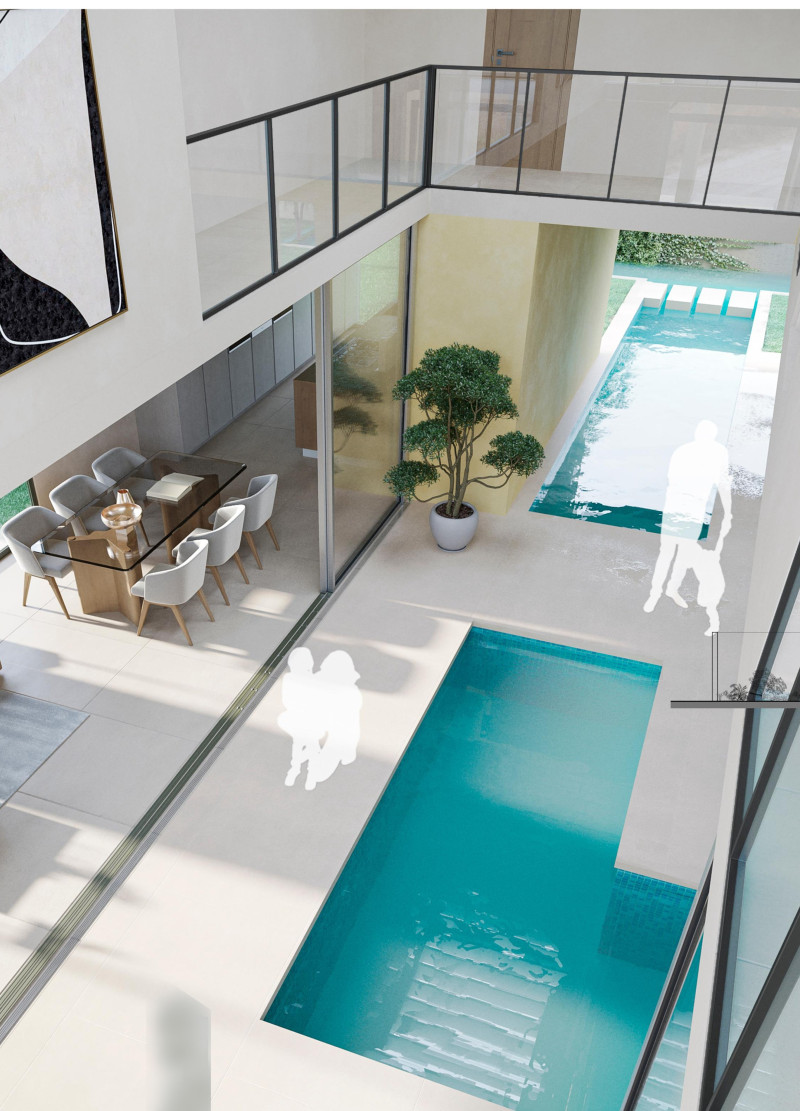5 key facts about this project
The essence of this project lies in its dual focus: creating a functional space while also engaging with the user on an emotional level. The building serves a specific purpose—be it residential, commercial, or public—and is designed to accommodate the needs of its occupants effectively. The layout incorporates flexible spaces that adapt over time, reflecting an understanding of evolving requirements and promoting a sense of community.
In terms of materiality, the project utilizes an array of carefully selected materials, enhancing the visual and tactile experience. Elements such as concrete, glass, timber, and metal are prevalent, each chosen for their structural qualities, aesthetic potential, and environmental impact. Concrete provides a robust foundation, while glass facilitates natural light penetration, creating a sense of openness and connection to the outdoors. Timber acts as a warm contrast to the colder materials, introducing organic textures that soften the overall appearance. Metal accents may highlight structural components or serve functional purposes in a visually appealing manner.
The design also reflects a unique approach to sustainability. By integrating renewable energy solutions, efficient insulation, and water conservation techniques, the project emphasizes a commitment to environmental stewardship. Green roofs or walls can be identified as a significant feature, promoting biodiversity and thermal regulation while contributing to the urban ecosystem. This thoughtful integration of ecological principles not only enhances the building's performance but also resonates with an increasingly eco-conscious society.
Spatial organization plays a critical role in the overall success of the design. The use of open floor plans fosters a sense of connectivity among users, while strategically placed private areas ensure that individual needs are met. The relationship between indoor and outdoor spaces is brought to life through large windows and terraces that blend the boundaries between them. This deliberate connection enhances both aesthetic enjoyment and functional versatility, allowing users to engage with their environment on multiple levels.
One of the most noteworthy elements of the project is its commitment to cultural sensitivity and local context. The design reflects an understanding of the historical and social narratives of the area in which it resides. Architectural elements may draw inspiration from local building traditions or materials that resonate with the community's heritage, thus creating a more relatable and anchored presence within the landscape. This consideration elevates the project, allowing it to contribute positively to the urban fabric while fostering a sense of identity among its users.
The architectural plans, sections, and designs reveal meticulous attention to detail, showcasing the designer’s thought process and intention at every level of the project. By engaging with these elements, readers can gain deeper insights into the functionality and artistry present in the design.
This project offers a comprehensive reflection of contemporary architectural ideas, merging utility with environmental and cultural awareness. Its success lies in its unique interpretation of space, materiality, and sustainability, inviting continuous interaction and engagement from its users. To fully appreciate the nuances and craftsmanship of this architectural endeavor, it is encouraged to delve deeper into its presentation, exploring the architectural plans and sections for a more profound understanding of its design outcomes and innovations.


























